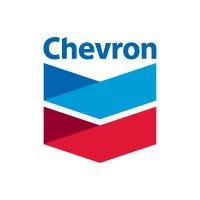
Beusa Energy
Strong
Beusa Energy is an experienced management team focused on E&P Operations, Fracturing Services Operations, Turbine Power Solutions and Materials and Logistics Services in the U.S.



Strong
Beusa Energy is an experienced management team focused on E&P Operations, Fracturing Services Operations, Turbine Power Solutions and Materials and Logistics Services in the U.S.

Strong
Our greatest resource is our people. Their ingenuity, creativity and collaboration have met the complex challenges of energy’s past. Together, we’ll take on the future. We support the LinkedIn Terms of Use (User Agreement), and we expect visitors to our page to do the same. We encourage open, lively conversation with a few simple rules: --We reserve the right to correct factual errors. --We will reply to comments when appropriate. --If we disagree with other opinions, we will do so respectfully. --You may not post anything that is spam or that is abusive, profane, or defamatory toward a person, entity, belief, or symbol. --We will delete any posts that contain personal information such as email addresses, phone numbers and physical addresses, and other third party intellectual property material, when that information does not belong to the author of the post. --You may not post job listings for non-Chevron positions. --While we support lively, open discussion, we reserve the right to delete comments.
Security & Compliance Standards Overview
No incidents recorded for Beusa Energy in 2025.
No incidents recorded for Chevron in 2025.
Beusa Energy cyber incidents detection timeline including parent company and subsidiaries
Chevron cyber incidents detection timeline including parent company and subsidiaries
Last 3 Security & Risk Events by Company
MinIO is a high-performance object storage system. In all versions prior to RELEASE.2025-10-15T17-29-55Z, a privilege escalation vulnerability allows service accounts and STS (Security Token Service) accounts with restricted session policies to bypass their inline policy restrictions when performing operations on their own account, specifically when creating new service accounts for the same user. The vulnerability exists in the IAM policy validation logic where the code incorrectly relied on the DenyOnly argument when validating session policies for restricted accounts. When a session policy is present, the system should validate that the action is allowed by the session policy, not just that it is not denied. An attacker with valid credentials for a restricted service or STS account can create a new service account for itself without policy restrictions, resulting in a new service account with full parent privileges instead of being restricted by the inline policy. This allows the attacker to access buckets and objects beyond their intended restrictions and modify, delete, or create objects outside their authorized scope. The vulnerability is fixed in version RELEASE.2025-10-15T17-29-55Z.
Envoy is an open source edge and service proxy. Envoy versions earlier than 1.36.2, 1.35.6, 1.34.10, and 1.33.12 contain a use-after-free vulnerability in the Lua filter. When a Lua script executing in the response phase rewrites a response body so that its size exceeds the configured per_connection_buffer_limit_bytes (default 1MB), Envoy generates a local reply whose headers override the original response headers, leaving dangling references and causing a crash. This results in denial of service. Updating to versions 1.36.2, 1.35.6, 1.34.10, or 1.33.12 fixes the issue. Increasing per_connection_buffer_limit_bytes (and for HTTP/2 the initial_stream_window_size) or increasing per_request_buffer_limit_bytes / request_body_buffer_limit can reduce the likelihood of triggering the condition but does not correct the underlying memory safety flaw.
In Xpdf 4.05 (and earlier), a PDF object loop in a CMap, via the "UseCMap" entry, leads to infinite recursion and a stack overflow.
A vulnerability was identified in NucleoidAI Nucleoid up to 0.7.10. The impacted element is the function extension.apply of the file /src/cluster.ts of the component Outbound Request Handler. Such manipulation of the argument https/ip/port/path/headers leads to server-side request forgery. The attack may be performed from remote.
HCL Traveler for Microsoft Outlook (HTMO) is susceptible to a credential leakage which could allow an attacker to access other computers or applications.